The next morning we leave Tim and Kim Village and heading back on the gravel road. Roads are often washed away and you have to dodge around the area, this time we just have to pass a dry river bed.
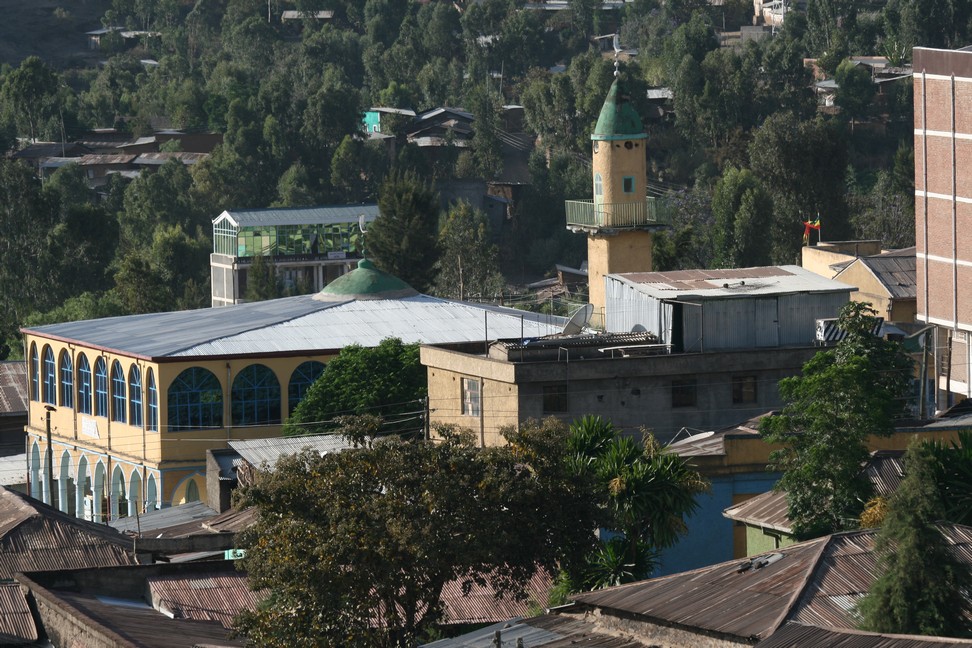
In the early afternoon we reach Gondar, the historic royal city. First, we visit the palace district, the so-called Gemp. The plant was started in 1630 and over the years more buildings have been added to construction. The whole district includes 7,000 square meters and is surrounded by an enclosure wall with 12 gates. No buildings are alike.
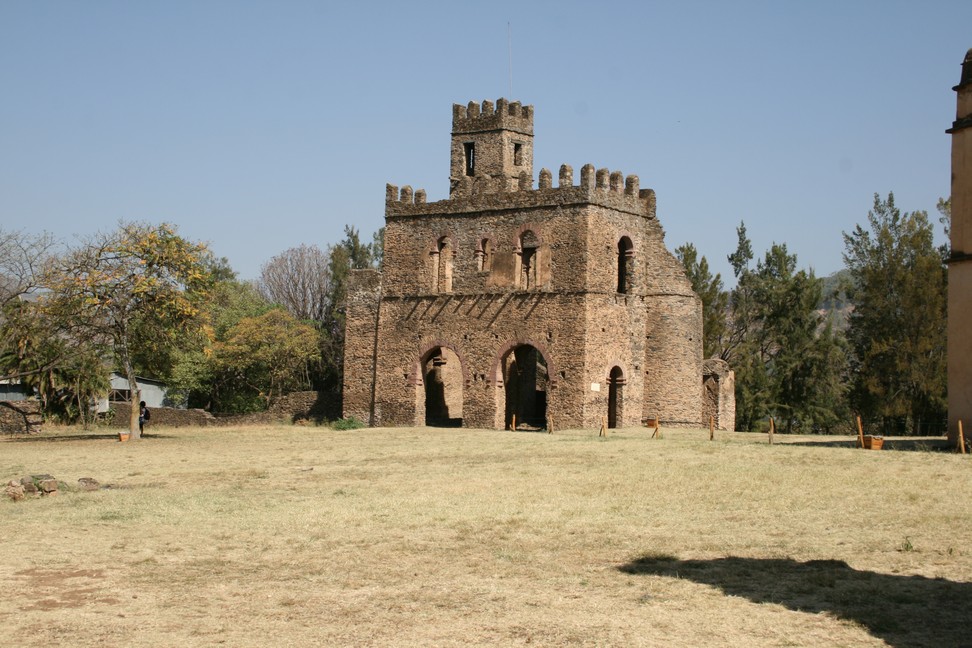
The best preserved is the palace of Fasilides, it is the oldest on the site and is the symbol of Gondar. A legend says that an old man had advised the Emperor to build, instead of a pond, his palace here. First he had built four towers, one for himself, one for his wife, one for audiences, and the court.
The space in between was roofed over later for banquets. The Palace has almost square floor plan of 25 x 25 meters. The interiors are still used for official events occasionally. From the palace you have a good look at the archive. This two-story building with corner tower is now a ruin.
In the yellow plaster building is the library of the Emperor John. The upper floor is reached by a staircase. Today the management of the Gemp is housed here. Emperor Dawit III had built later this singer hall.
At the very end of the complex there is the Palace of Mentewab. The Empress built the palace in a trench, the upper floor is accessed via a bridge. The turret is to be construed more as an ornament than as a defensive tower. Door and window frames are divided beautiful. The palace now houses the town library of Gondar.
Ethiopia is famous for its churches and monasteries. We visit the monastery of Debre Berhan Selassie. One enters the plant, which is surrounded by a wall through a gatehouse with tower. The Monastery was built in 1700 and consecrated the same year. Into the perimeter wall towers and apartments are built for the monks. According to legend, it was not only the strong wall that saved the monastery in 1888 from the onslaught of the Mahdists. A swarm of bees attacked the assailants, who then fled from the monastery.
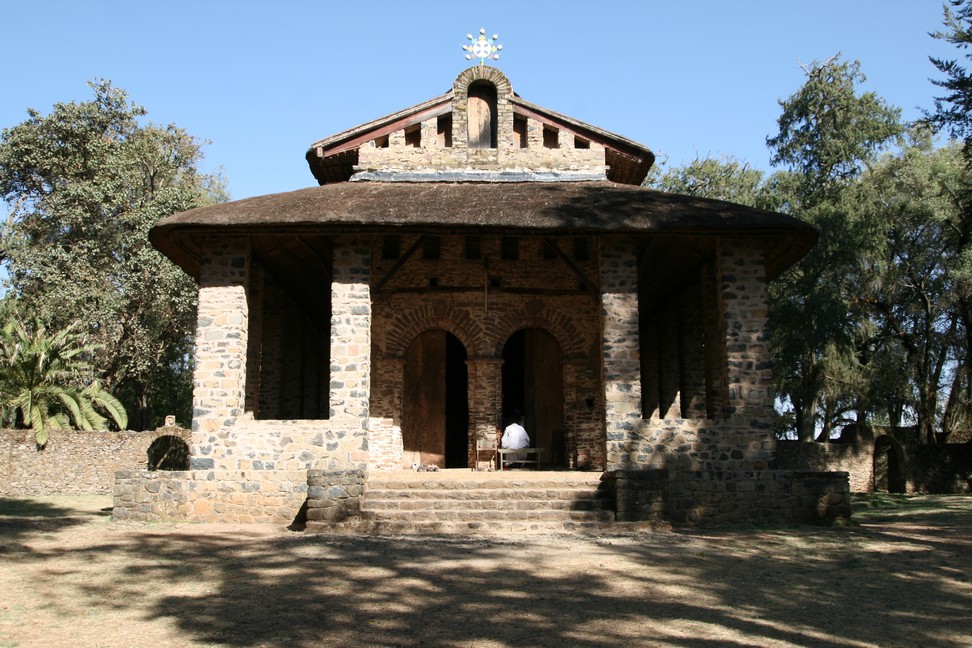
The church itself is built in an odd shape. The long rectangular building copies the form of a basilica in Axum, dealing with pillars, as the rock church Medhane Alem in Lalibela.
On the ceiling winged heads of angels are painted, with the big eyes, typical of the style of Gondar. The wall paintings are among the finest in Ethiopia. Today’s paintings have been restored during the 19th century. On the walls there are almost all aspects of Ethiopia’s religious paintings represented.
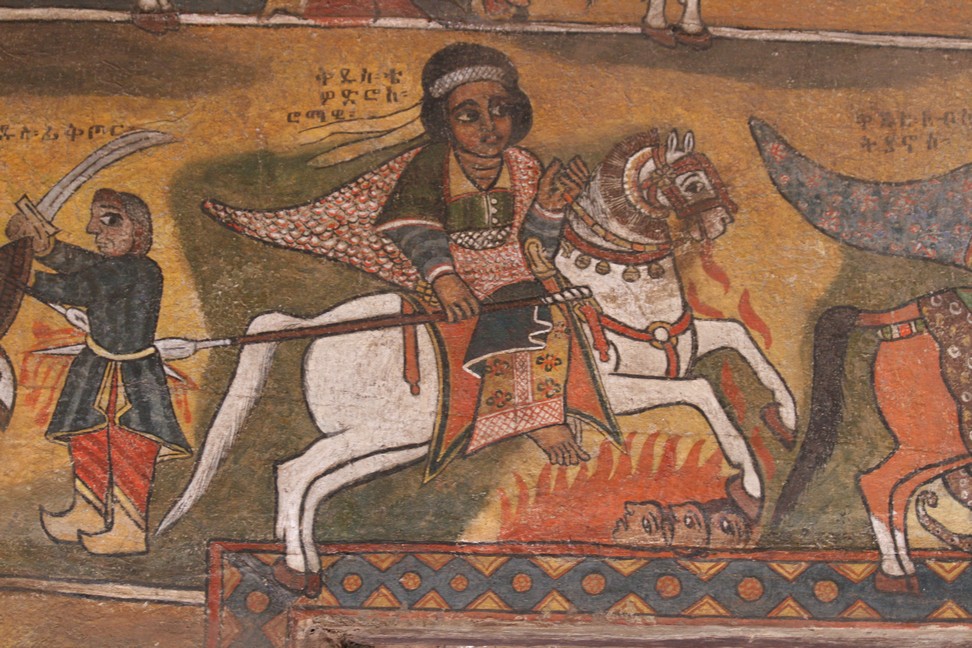
We drive on to the bath of the Fasilides. The unique water tower stands in a garden overgrown with large trees. On site is a pool of 70 by 40 meters, in which the castle is built. The pool is for reasons of preservation not filled with water all year round. Just for Timkat celebration, the Feast of the Baptism of Jesus, is it filled with a water pipe from the river. After people had spent the night in prayer, the Bishop of Gondar inaugurates the water by dipping his cross, which is the sign for the children to jump into the sacred waters of the basin. A wooden cross is allowed to float on the water, from the direction in which it floats, the priest read the future.
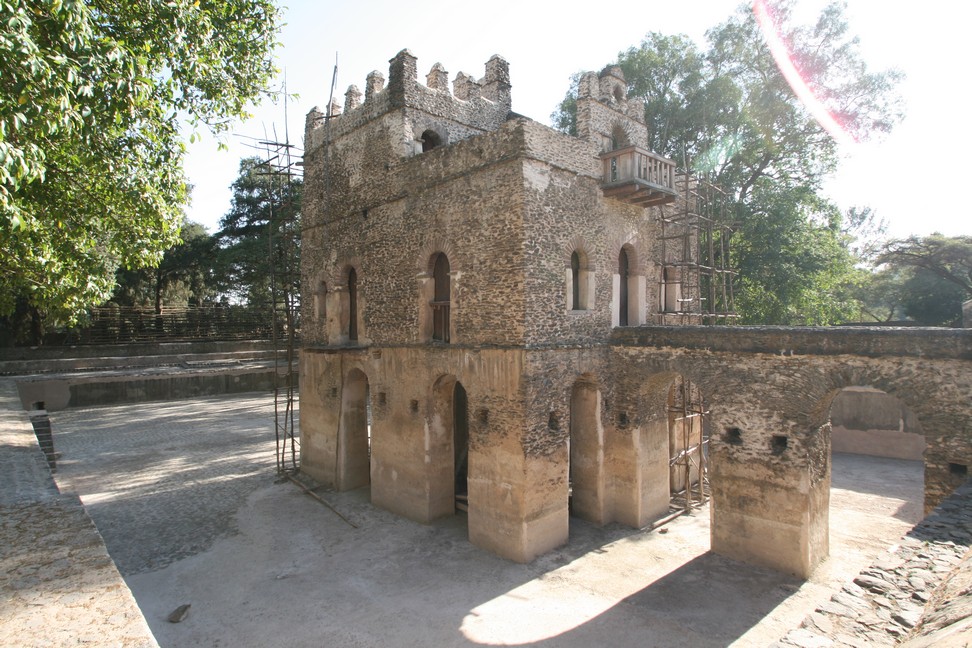
We are tired of culture by now, we want to explore the more remote parts of Ethiopia, especially the northern parts around Axum. Early morning we leave our guest house. We could park and camp in the courtyard, a little cramped, but definitely with a flair.